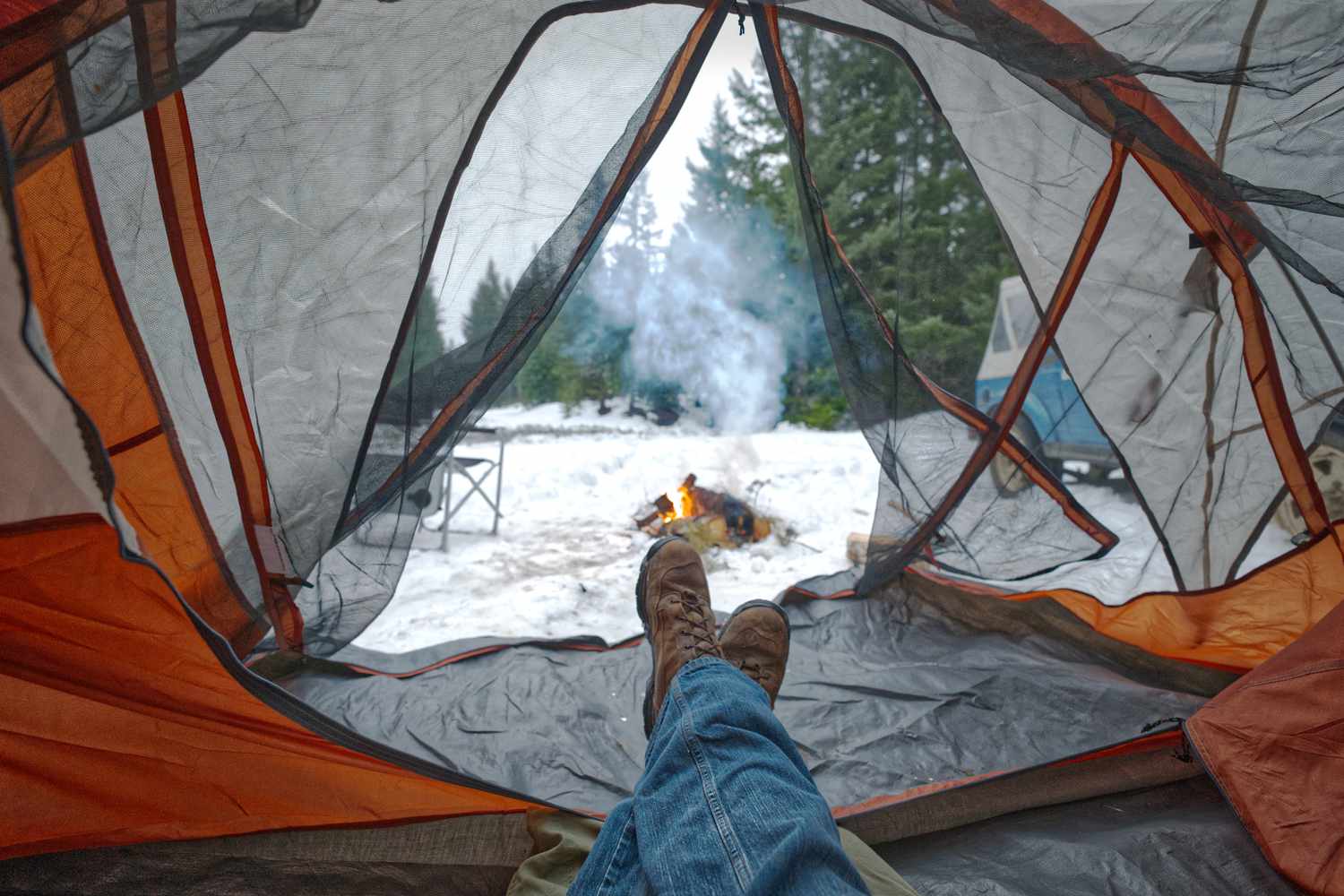
Camping in low-light conditions can be a unique and exciting experience, but it also comes with challenges. Whether navigating through twilight or setting up camp after sunset, the reduced visibility can make even simple tasks more difficult. However, camping in these conditions can be incredibly rewarding with the right preparation and lighting equipment. The peaceful quiet of dusk, the beauty of starlit skies, and the feeling of adventure are all heightened in the absence of full daylight.
Proper lighting is one of the most important aspects of camping in low-light settings. Having the right gear makes it easier to navigate your campsite, enhances safety, and allows you to enjoy the experience fully. From setting up tents to cooking meals or relaxing around the fire, reliable lighting ensures everything goes smoothly after the sun goes down.
This guide will walk you through the top tips for camping in low-light conditions. We’ll cover everything from choosing the best headlamp to conserving battery power, giving you the knowledge and tools to make your next low-light camping trip successful. Let’s dive in and explore how to best prepare for a great adventure in the dark!
Tip 1: Invest in a High-Quality HeadlampHands-Free Lighting
When camping in low-light conditions, a reliable headlamp is one of the most valuable tools you can bring. The beauty of a headlamp lies in its hands-free functionality, allowing you to tackle all sorts of tasks without needing to hold a torch. Whether setting up your tent, gathering firewood, or cooking a meal after dark, hands-free lighting ensures you can move freely and work efficiently. In unfamiliar environments, having both hands available while maintaining full visibility makes camping at night much safer and more convenient.
Lumens and Beam Distance
Not all headlamps are created equal, and the right one can make all the difference in your camping experience. When selecting a high-performance headlamp, consider two key specifications: lumens and beam distance.
- Lumens: This measures the brightness of the light. A headlamp with 200-400 lumens is typically sufficient for most tasks for camping. However, if you expect to engage in more demanding activities like hiking in complete darkness or navigating tricky terrain, you might opt for a headlamp with 500 lumens or more.
- Beam Distance refers to how far the light can travel. A headlamp with a long beam distance is helpful when you need to spot objects at a distance or scout ahead on dark trails. Look for a headlamp with a beam distance of at least 50 to 100 meters for a good balance between close-up and long-range visibility.
Battery Life
Another important factor to consider is battery life. Long-lasting battery performance is essential for multi-day trips where recharging may not be an option. Look for headlamps offering at least 10-20 hours of battery life on lower brightness settings, ensuring you won’t run out of light when needed most. Rechargeable headlamps are also a great eco-friendly option, saving you the hassle and expense of replacing disposable batteries.
Product Suggestion
When choosing a headlamp for outdoor adventures, it’s important to prioritise key features like lumen output, beam distance, and battery life. A good outdoor headlamp should offer the right balance between brightness and durability, ensuring you have reliable lighting for various activities, whether hiking, setting up camp, or cooking in the dark. Look for headlamps designed for rugged environments and offer multiple brightness settings to suit various needs. With the right headlamp, you can fully enjoy your low-light camping experience, prepared for whatever the night brings.
Tip 2: Bring a Reliable Torch for BackupBackup Light Sources
While a high-quality headlamp is your primary light source when camping in low-light conditions, it’s always wise to have a reliable torch as a backup. A secondary light source can be a lifesaver if your headlamp battery runs out or you need extra illumination for specific tasks. A torch can provide additional brightness when searching for gear, setting up camp in the dark, or signalling for help in emergencies. It’s also handy when you need more focused lighting when a headlamp’s wide beam might not be enough.
Torch Features to Consider
When selecting a torch for camping, a few key features can enhance your overall experience and ensure your backup light is as dependable as your headlamp:
- Durability: Your torch should withstand rough outdoor conditions, including drops, rain, and dust. Look for a torch made of sturdy materials like aircraft-grade aluminium that can handle wear and tear during your camping trip. A torch with an IPX rating will ensure water and dust resistance, which is critical for outdoor use.
- Battery Type (Rechargeable vs. Disposable): Consider whether you want a torch with rechargeable ordisposable batteries. Rechargeable batteries are more cost-effective and environmentally friendly over time, especially for frequent campers. However, disposable batteries can be a good option for longer trips where charging might not be possible, as long as you bring spares.
- Adjustable Focus: A torch with adjustable focus allows you to switch between a wide floodlight for lighting up a larger area and a narrow spotlight for illuminating objects at a distance. This versatility is essential when you need different types of light for various tasks, such as lighting your campsite or checking out a trail in the dark.
Finding the Right Torch
For a reliable selection of torches built for outdoor adventures, visit https://maxbeamaustralia.com.au/. MaxBeam Australia offers a range of high-performance torches designed to handle the severities of camping and other outdoor activities, ensuring you always have dependable light when needed.
Tip 3: Use Lanterns to Light Up Your Campsite
Ambient Lighting
While headlamps and torches are excellent for focused, directional lighting, lanterns provide a broader, more ambient light source that is perfect for illuminating your entire campsite. Lanterns cast soft, widespread light, making navigating, socialising, and relaxing easier without the harsh glare of a direct beam. They are ideal for creating a comfortable atmosphere in your camping area, whether reading by the tent, preparing meals, or simply enjoying the evening under the stars. Lanterns offer a more relaxed and hands-free option for lighting larger spaces, especially when multiple people share the same campsite.
Battery-Powered vs. Solar Lanterns
When choosing a lantern for your camping trip, consider whether a battery-powered or solar-powered option best suits your needs. Each type has pros and cons, depending on the duration of your trip and the availability of sunlight.
- Battery-Powered Lanterns:
- Pros: Battery-powered lanterns offer consistent and reliable brightness, making them ideal for longer trips or overcast conditions when sunlight is scarce. Many models allow you to adjust brightness levels, conserving battery life when needed.
- Cons: Bring extra batteries or ensure your lantern is fully charged before heading out. Disposable batteries can also add weight to your gear, and they aren’t the most eco-friendly option.
- Solar-Powered Lanterns:
- Pros: Solar-powered lanterns are eco-friendly and don’t require batteries, making them a lightweight and sustainable choice. They’re perfect for long trips with plenty of sunlight as they recharge during the day.
- Cons: Solar lanterns depend on sunlight to charge, so cloudy weather or dense forest can limit their efficiency. They may also take longer to recharge compared to the quick replacement of batteries in traditional lanterns.
Lantern Placement Tips
Strategically placing your lanterns around the campsite can maximise both safety and visibility. Here are a few tips for optimal lantern placement:
- Central Location: Position a lantern in the centre of your campsite to provide general illumination for the entire area. This will create a well-lit zone where people can gather, eat, or relax.
- Tent Entrances: Place smaller lanterns or hanging lights near the entrances of your tents to make it easy to find your way in and out without fumbling in the dark.
- Cooking Area: Ensure the area where you prepare meals is well-lit by placing a lantern on a table or hanging it above the cooking space. This improves safety when handling knives, stoves, and other equipment.
- Pathways: Use lanterns to mark pathways or obstacles within the campsite, such as uneven ground or branches, to prevent tripping or accidents.
With the right lanterns and thoughtful placement, you can create a safe, well-lit, and inviting environment at your campsite, making your low-light camping experience much more enjoyable.
Tip 4: Master the Art of Power ConservationBattery Management
When camping in low-light conditions, conserving your battery power is crucial to ensure your lighting lasts throughout your trip. Proper battery management can save you from finding yourself in the dark when you need light the most. Here are some practical tips to extend the life of your headlamp or torch batteries:
- Use Lower Brightness Settings: Modern headlamps and torches have adjustable brightness levels. Whenever possible, use the lowest brightness setting that still provides adequate visibility. Higher lumen outputs consume more power, so save the maximum brightness when needed, such as when navigating tricky terrain or searching for gear.
- Switch Off When Not in Use: It might seem obvious, but many people leave their headlamp or torch on when not actively using it. Make it a habit to switch off your lights when they’re unnecessary. Consider using ambient lighting like lanterns or moonlight for general tasks to reduce battery usage.
- Utilise Power-Saving Modes: Some headlamps and torches have power-saving or eco modes designed to extend battery life. These settings lower the light output while maintaining enough brightness for basic tasks, which can help stretch your battery power significantly.
Recharging Options
In addition to managing battery use, having reliable recharging options is essential for longer camping trips with limited access to electricity. Thankfully, several portable recharging solutions are perfect for keeping your lighting gear powered up during extended adventures.
- Portable Solar Chargers: Solar chargers are a fantastic option for campers, especially if your trip involves sunny weather. These chargers can harness the sun’s power to recharge your headlamps, torches, and other devices throughout the day. Many solar chargers are foldable and lightweight, making them easy to pack. They work best in open, sunny areas but may struggle to generate power on cloudy days or in shaded forests.
- Power Banks: Power banks are another excellent option for keeping your lights charged, offering the convenience of on-demand power without relying on sunlight. Depending on its capacity, a well-charged power bank can provide multiple recharges for your headlamp or torch. Opt for a power bank with a high mAh (milliamp-hour) rating if you plan to be off-grid for several days. Some models even come with built-in solar panels as a backup option, giving you the best of both worlds.
By mastering power conservation techniques and having a plan to recharge your gear, you can ensure your lighting never fails during those critical low-light moments. This lets you enjoy your camping experience without worrying about being left in the dark.
Tip 5: Plan Your Activities Around DaylightMaking the Most of Daylight
One of the simplest yet most effective ways to manage low-light camping is by planning your activities around the available daylight. Organising your day so that essential tasks like setting up camp, gathering firewood, and cooking are completed during daylight hours can significantly reduce the need for artificial lighting. This conserves battery life and makes tasks easier and safer to accomplish.
- Set Up Camp Early: Arrive at your campsite early enough to set up before sunset. This gives you ample time to pitch your tent, arrange your gear, and get comfortable while natural light is still available. If you’re in an unfamiliar area, this also helps you assess the terrain and locate any potential hazards that might be more difficult to spot after dark.
- Prepare Meals Before Dusk: Cooking can become more challenging in low-light conditions, so prepare your meals before the sun goes down. If you’re planning a late dinner, ready all your ingredients and cooking tools so you can easily finish the job with minimal lighting. Lanterns or low-power headlamps can help with tasks that need a bit of extra illumination.
- Organise Your Gear: Before darkness sets in, ensure all your gear is organised and easy to find. This can save you from fumbling around in the dark looking for essentials like jackets or cooking supplies. Having your items laid out in a way that’s easy to access also makes nighttime tasks smoother and more efficient.
Nighttime Activities
Camping in low-light conditions doesn’t have to limit your experience. With proper lighting, several enjoyable nighttime activities make camping even more memorable. Here are a few ideas that can help you make the most of the night:
- Stargazing: One of the true joys of camping in the wilderness is the unobstructed view of the night sky. After setting up camp and enjoying dinner, dim or turn off your lights to avoid light pollution and take in the stunning view of the stars. A low-lumen torch or headlamp with a red light filter can help preserve your night vision while stargazing.
- Storytelling by the Campfire: Gather your fellow campers around the fire and share stories, whether spooky campfire tales or personal adventures. The gentle flicker of the firelight and the glow of lanterns create the perfect ambience for an evening of storytelling and bonding.
- Night Hikes: Plan a short night hike with the proper lighting gear if you’re up for an adventure. Use headlamps with strong beam distances to light the trail ahead and ensure you know the route. Night hikes can offer a different perspective on the environment, with wildlife sounds and cooler temperatures adding to the experience.
- Campfire Games: Settle around the campfire for fun, low-light games. Simple games like shadow puppets, card games, or flashlight tag can be great ways to pass the time after the sun sets.
By planning your daytime activities wisely and embracing the opportunities nighttime camping offers, you can make your trip efficient and enjoyable. The combination of good planning and the right lighting gear ensures you get the most out of your camping experience, day or night.
Conclusion
Camping in low-light conditions can be an incredible experience, but it requires the right preparation and lighting gear to ensure safety and comfort. To recap, here are the five key tips to keep in mind when planning your next low-light camping adventure:
- Invest in a High-Quality Headlamp: Hands-free lighting is essential for any nighttime task, and a reliable headlamp with the right lumen output and battery life will be your go-to source of light.
- Bring a Reliable Torch for Backup: Like a durable and versatile torch, a secondary light source ensures you won’t be left in the dark if your headlamp runs out of power.
- Use Lanterns to Light Up Your Campsite: Lanterns provide soft, ambient lighting, making your campsite a more comfortable and safer space to navigate after dark.
- Master the Art of Power Conservation: Extending your battery life through careful usage and having recharging options, like solar chargers or power banks, will keep your lights going throughout the trip.
- Plan Your Activities Around Daylight: Make the most of the daylight for key tasks and embrace the nighttime for activities like stargazing or storytelling with the right lighting.
Following these tips, you can confidently tackle any low-light camping trip and enjoy the experience.

Strategic Marketing Solutions for Modern Businesses

How Traffic Management Businesses Are Improving Field Accountability

How to Plan a Last-Minute Holiday Trip with Instant Loan Support

The Secure Agility Blueprint: Integrating DevOps Strategy with Autonomous Azure Defense

Know What Is An Adaptive Water Purifier And How Does It Work In Indian Homes?

The Secure Agility Blueprint: Integrating DevOps Strategy with Autonomous Azure Defense

Know What Is An Adaptive Water Purifier And How Does It Work In Indian Homes?

Fiji Water Wholesale Prices Compared & Analyzed








